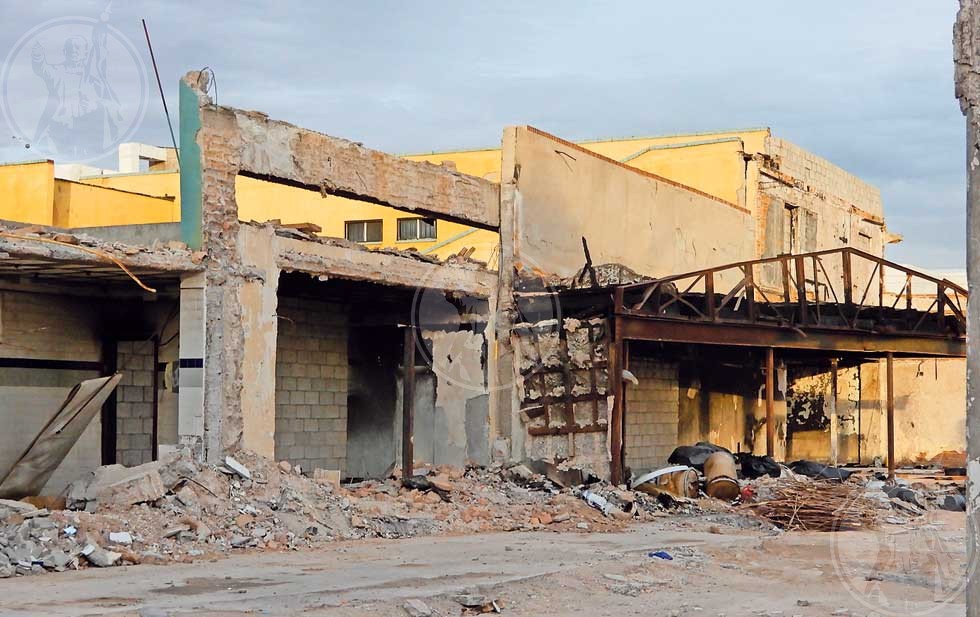
Luis Carlos Cano
Juarez Journal
Saturday, January 30, 2021 | 14:26
The city of Juarez.– One week after the 10th anniversary of the traditional Lions Club Casino or Lions Casino, as it was known, only part of the construction of that office building, part of the bar and kitchen remains. In the area of what was that memorable ballroom there is only rubble, in addition to the columns that delimited the floor with the dining area. People of different ages now remember their place with its lamps and glass lit by pink spotlights, say the historians of the El Juárez de Ayer project. On February 3, 2011, a fire destroyed the casino, considered an emblematic place for many generations of Juareni. It was inaugurated in 1956 and was known for its evenings and dances organized by schools such as El Chamizal High School in the late 1970s.
His first name was “Segundo Frente”, and at that time he presented varieties with the most famous musical groups and singers of the time in this border and in other parts of the country, such as the orchestra of maestro Ramón Muñoz Torres, Ricardo Echeverría and “Locos del Cha Cha Cha”, dancer Fanny Cabrera, “Locos del Ritmo” and tango singer Carlos de Nava are advertised on one of the posters promoting dance in this casino. “Strictly family atmosphere” was indicated on the poster announcing the next presentation of the most popular artists on radio and television. A few years later it was named “La Joya” and later Casino Leonístico in 1961, says José Luis Hernández Caudillo, a member of the group El Juárez de Ayer. The Leonístico Casino, built between 1955 and 1956, had a capacity of a thousand people and was located between the streets of Uruguay, to the west; Republic of El Salvador, the east; Plan de Ayala, to the north and Niños Héroes to the south, in the El Barreal neighborhood. In the 70’s, disco music began and gave birth to mobile discos with English names, such as “Stardust Disco” and which still at that time alternated one-hour sessions with live music by the orchestra of Don Carlos Aceves, as well as the organ Polo Ochoa, is related in the memoirs about this place. The presentations were dominated by the “strictly family atmosphere”; In the dance, the clothing had to be a jacket and tie for gentlemen and a dress for women, if it was a dance from 10:00 at night to 3:00 in the morning. If it was an afternoon from 7:00 pm to 12:00 at night, you simply had to be well dressed and not have casual clothes. Hernández recalls that the sale of alcoholic beverages was not allowed in the evening. Therefore, the famous Lions grenadines, as well as lemonades and Coca-Colas were sold in industrial quantities during the event. “There were times when we, the boys, took the girls out to dance according to a protocol that was to be done; the lady in question was located, given three or four passes by the table where she talked to other girls. Then they gave him a few turns around the table, now in a sincere challenge and maybe even exchanging a few glances, then the final approach: Can you dance with me? or are you just dancing ?, and then the final answer, a yes or a no “, he comments. The Lions was the most prestigious salon and became an icon of healthy entertainment from the 60’s to part of the 80’s, according to the chronicles of that time.
In short
• It was inaugurated in 1956
• The ruins are located in the El Barreal neighborhood
• Performances were presented with local and national artists